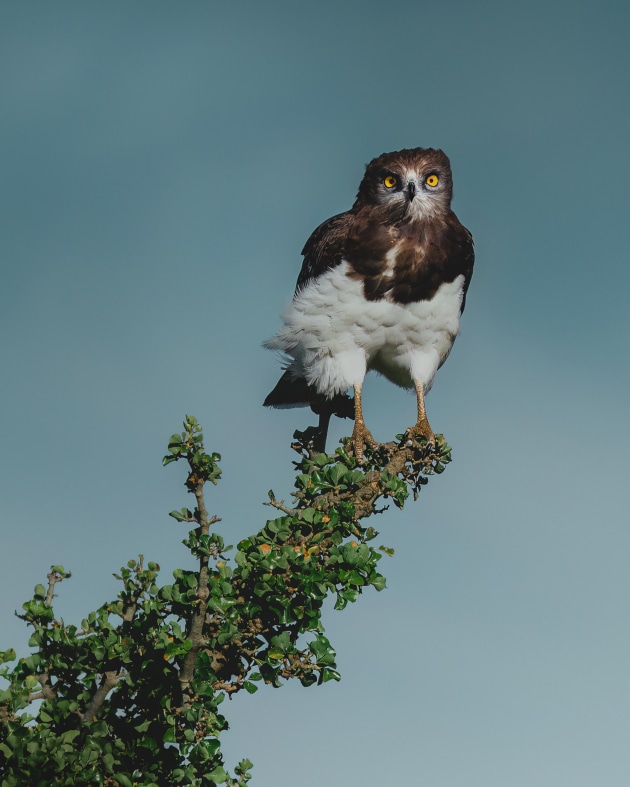Peak portraiture: Photo tips for better wildlife portraits (Part one)
Few genres offer the thrill and challenge quite like wildlife photography – capturing the essence of a fleeting moment in nature requires technical knowledge, but knowing how to compose your images is what helps your work stand out from the crowd.
Throughout this guide, we’ll explore the techniques that have helped me create portraits that I’m truly proud of, in the hopes that it can help you achieve the same.

Get to eye level
Being eye level with the animal you’re photographing is one of the most important composition techniques for wildlife photography – this is always my first step.
Not only does shooting from the animal’s perspective create a deeper moment of connection, but on a more technical level, it also avoids any warping of their proportions and can create a more visually appealing background.

Sometimes this may be tricky to achieve, especially if you’re shooting from a vehicle or photographing an animal high up in a tree, but remember that the further you are from the subject, the less extreme the angle will be. Sometimes you may need to extend this distance to create the illusion of being at their level.
Try to get comfortable with lying on the ground, crouching, lowering your tripod, hanging your arm out of the vehicle (if it’s safe to do so), and being in awkward positions to create a captivating moment between you, the animal, and your viewer.

Look for leading lines
When scanning a scene and constructing my compositions, I’ll often search for winding roads, branches, natural earth patterns, a meandering river (sometimes even a rainbow), that can guide the viewer on a journey through the scene to my chosen subject.
Strategically positioning these natural guiding lines to lead the eye to the main point of interest is a powerful way to contribute to the overall narrative of a photograph – making sure that it guides the viewer into the frame and not out of it.

Due to photographing wild species that can move at any given moment, there is certainly an element of luck involved, but if luck is on your side, it often just takes a change in your angle to line the elements up in a powerful way.
Remember that you can always accentuate and strengthen these lines in post-production by playing with Lightroom’s selective masking tools.
Frame with natural surroundings
By using natural elements such as branches, rocks, foliage or long grass to frame and isolate the main focal point, it adds a sense of intimacy; as if the viewer is peering into a private moment within the animal’s environment.
Search for angles that involve objects in their habitat that can create a natural frame and add further dimension to a scene.

If the animal is in a tree or dense shrubbery, it can take some extra adjustment to perfect the framing and focus, but the depth it creates is worth every bit of extra effort. This technique can also help to eliminate any clutter from the foreground that can be distracting to the overall image – a win-win.
Remember the rule of thirds
The general premise of the ‘Rule of Thirds’ is to divide your frame into 9 equal sections (thirds, both horizontally and vertically) and line up the important parts of the scene into one of the sections or the point in which the lines meet.
This is said to create a more visually appealing composition that can be very useful when photographing wildlife.

When applying this technique, turn on the grid in your camera's viewfinder to help you compose your shot, or try to envision it in your mind when shooting.
I find this particularly useful when photographing environmental portraits, moving animals, or even side profiles, as I can line up the eye (or the most important focal point) into one of the intersecting lines/sections.
Look out for part two next week.
About the author: Kate Newman is a wildlife and conservation photographer from Melbourne (Naarm), specialising in capturing portraits of the wild and celebrating the beauty of nature. See more at katenewman.com.


